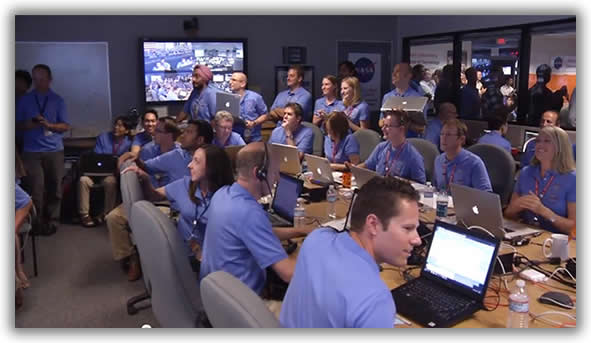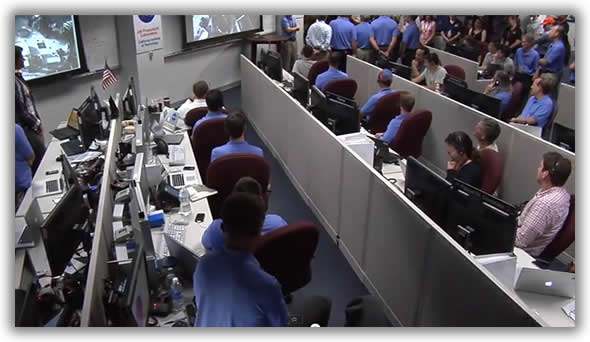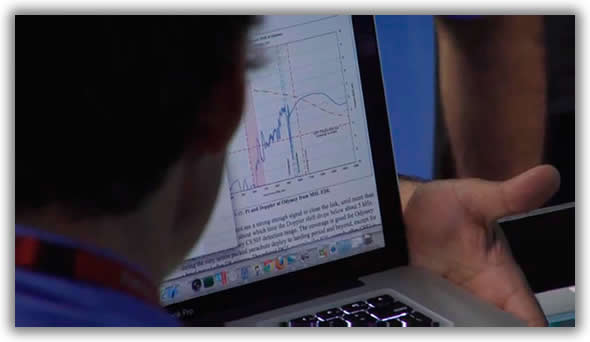Increasingly Macs are used in more advanced projects, where you need a system that will not fail and that is as reliable as possible. But now this is not affixed to the reliability of the Macintosh, this is already the ages of defect existing in the Pentium floating point. But that's a long story, which still reminds the PowerPC G3 that were all the more reliable

According to reports advanced by Steven Sande, it seems that scientists and engineers at the Jet Propulsion Laboratory of NASA, responsible for the Mars Science Laboratory, Curiosity and the known, the vehicle that has roamed the surface of Mars since August 6, users are convinced of the MacBook Pro with Mac OS X. And this is the picture you can see the control room of the mission.

Cases were also used in MSA (Mission Support Area) when were receiving streaming mission where they received telemetry from the spacecraft, while it descended to the surface of Mars. In addition, of course, were on the table many iPhones. It's a given that NASA engineers are Apple fans, and certainly will not be by status, but by the quality and guarantees that give the user equipment.

The image above is particularly interesting because it reveals a lot about the type of use that is given to a Mac confirms that engineers use Mac OS X and not any version of Windows or Linux. Also reveals that Parallels is used to fill the need to run applications that were designed for Windows only, and may be used at the Jet Propulsion Laboratory. We still browsers Firefox and Chrome, as well as applications such as Xcode or Apple Aperture, and others.
The Macs were decisive and helped the placing of Curiosity project, which cost 2.5 billion dollars and spent seven minutes of terror at the entrance of the planet Mars after more than eight months of travel. Seven minutes for strong hearts and with eyes fixed on the screens of Macs.
Regarding the adoption of Macs in the 90s, everything has a reason for being:
The engineer pointed out the error of floating-point division in the 90's as a reason for Pentium adaopção of Macs. Workstations PowerPC Mac that was not used the Intel microprocessor and were not affected by the failure of arithmetic Pentium CPU, the failure was so obscure that it took a large number of theoretical experiences to explain, but the lack of brio of the initial response Intel did not sit well with the people who could not risk a "minimum" of millions of dollars.
Mel Martin from TUAW ends with a pinprick in tone subliminal message:
When someone says "Macs are toys", may kindly recall that these are quite popular for the "real job" as help aircraft of 2.6 billion dollars to land at 352 million miles. The MSL mission aims to explore the geological origin of Mars and perhaps whether life ever existed there.
While currently all operating systems have great quality and are guaranteed high performance, the Apple ecosystem provides another type of reliability at least for NASA engineers, as we see in these testimonies.
No comments:
Post a Comment